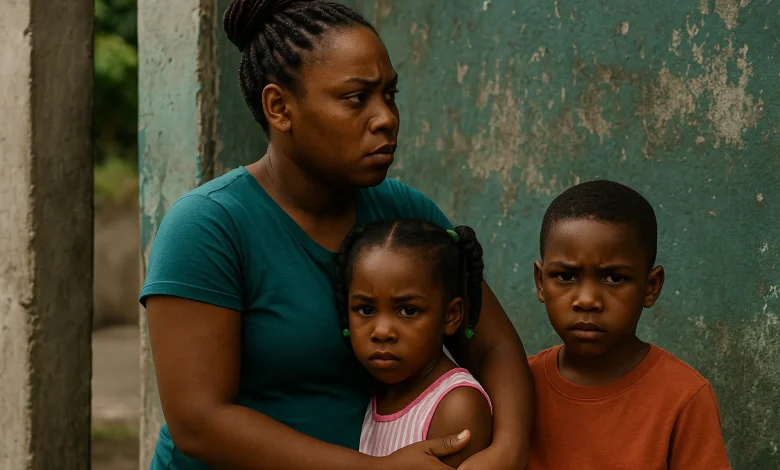Children and Young Persons Welfare Act (1972) of Dominica

The Children and Young Persons Welfare Act (1972) of Dominica was one of the earliest comprehensive statutes designed to safeguard children and adolescents from neglect, abuse, and exploitation. Enacted as Chapter 37:01 in the Revised Laws of Dominica, the Act consolidated earlier colonial-era ordinances relating to child care and welfare, and sought to establish formal state responsibility for protecting children at risk. Although later laws, such as the Protection of Children Act (2001) and the Children and Young Persons (Care and Adoption) Act (Chapter 37:03) now provide broader frameworks, the 1972 Act was foundational in shaping Dominica’s child welfare system.
Historical background and reasons for enactment
Prior to 1972, child welfare matters in Dominica were scattered across small ordinances dealing with juvenile offenders, guardianship, and child neglect. With rising concerns about poverty, migration, and social instability during the late 1960s and early 1970s, lawmakers recognized the need for a consolidated approach. The government, influenced by regional developments and international conversations about children’s rights, introduced the Children and Young Persons Welfare Act as a progressive statute to define children’s rights, expand state guardianship powers, and regulate children’s homes and institutions.
At the time of its passage, Dominica had limited social services, and welfare systems were mostly delivered by churches and charitable organizations. The 1972 Act therefore marked a critical shift toward formal state involvement in protecting vulnerable children.
Core provisions and scope of the Act
The Children and Young Persons Welfare Act addressed multiple aspects of child protection and welfare.
- Definition of “child” and “young person”: A child was generally defined as under 14 years, while a young person referred to those between 14 and 18.
- Children in need of care or protection: The Act provided for children suffering neglect, abandonment, or abuse to be placed under the supervision of the state.
- Powers of the courts: Magistrates were authorized to issue care orders, remove children from harmful environments, and appoint guardians.
- Regulation of foster care and children’s homes: All institutions housing minors were required to be registered and subject to inspection.
- Offences against children: Cruelty, neglect, exploitation for labor, or exposing children to moral danger were criminalized under the Act.
- Guardianship and custody provisions: The courts could assign custody to responsible relatives or state agencies when biological parents failed in their duties.
- Probation and supervision: Introduced welfare officers and probation officers to monitor young persons placed under state care.
Institutional responsibilities established by the Act
Implementation of the Act relied on both courts and administrative agencies:
- Magistrates’ Courts – empowered to issue care and protection orders, custody rulings, and guardianship decisions.
- Social Welfare Division – eventually became the lead agency, responsible for investigating abuse cases and supervising foster placements.
- Probation services – introduced to monitor young persons at risk of delinquency or those placed under conditional care.
- Approved children’s homes – institutions licensed under the Act to house orphans and children in need of care.
Relationship to later statutes and reforms
The Children and Young Persons Welfare Act of 1972 was gradually supplemented and partly superseded by more modern laws:
- Protection of Children Act (2001) – strengthened definitions of abuse and exploitation, modernizing the framework.
- Children and Young Persons (Care and Adoption) Act (Chapter 37:03) – established in later years to integrate care and adoption processes.
- Adoption of Children Act (37:02) – provided separate legislation governing adoption procedures.
- Sexual Offences Act (Chapter 10:37) – specifically addressed sexual abuse of minors.
- Maintenance of Children Act (Chapter 12:04) – reinforced financial obligations of parents toward children.
While the 1972 Act laid the foundation, these later statutes expanded protections and reflected international obligations under the UN Convention on the Rights of the Child (CRC), which Dominica ratified in 1991.
Notable strengths of the 1972 Act
- First comprehensive child welfare law in Dominica.
- Clear definitions of child and young person for legal purposes.
- Judicial oversight to protect children in cases of neglect and abuse.
- Institutional regulation requiring registration and inspection of children’s homes.
- Probationary system to monitor at-risk youths.
- Recognition of state responsibility for children in need of care.
Major limitations and challenges of the 1972 Act
- Resource constraints: At the time, there were too few welfare officers to enforce the Act effectively.
- Outdated definitions: Later criticized for narrow views on abuse, particularly emotional and psychological harm.
- Limited focus on sexual exploitation: Addressed mainly in moral terms rather than through modern protections.
- Institution-centered approach: Relied heavily on placing children in homes, with little emphasis on community-based care.
- Lack of child participation: Did not include provisions for children’s voices in decisions affecting them.
- Weak enforcement: Social stigma and family pressure often kept cases unreported.
Social and cultural impact of the Act
The passage of the Children and Young Persons Welfare Act marked a shift in Dominican society, where responsibility for vulnerable children moved gradually from informal kinship systems to state-managed frameworks. In rural communities, extended families had long cared for orphaned or abandoned children, but the Act introduced the idea that the state had a legal duty to intervene in cases of abuse.
While enforcement was uneven, the Act contributed to growing awareness of child rights. It also paved the way for the establishment of government welfare offices and laid the groundwork for modern child protection services in Dominica.
Regional and international context
The Act reflected trends across the Caribbean in the 1970s, as several Commonwealth territories updated their child welfare laws. While limited compared to later statutes, the 1972 Act positioned Dominica to integrate international norms when it ratified the CRC in 1991.
Regional organizations such as the OECS and CARICOM later encouraged harmonization of child welfare laws, leading to the adoption of the Protection of Children Act (2001) and subsequent reforms.
Future relevance of the Act
Although largely superseded, the Children and Young Persons Welfare Act of 1972 remains an important historical statute. It laid the institutional foundations for Dominica’s modern child protection framework and is still cited in legal contexts where older provisions remain applicable.
Future reforms will likely continue to integrate the principles first articulated in 1972, but with updated standards emphasizing children’s participation, community-based care, and digital protections against modern forms of exploitation.




